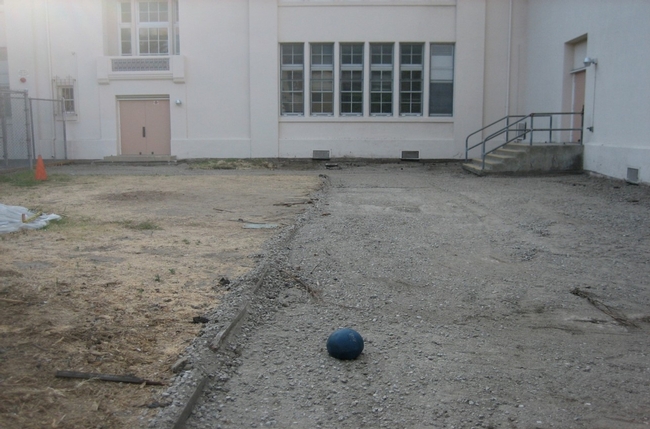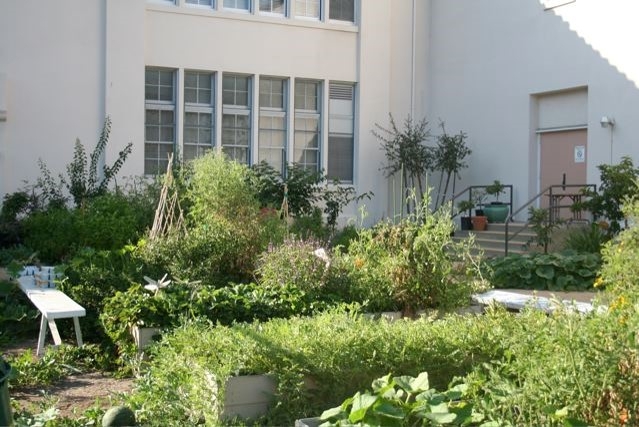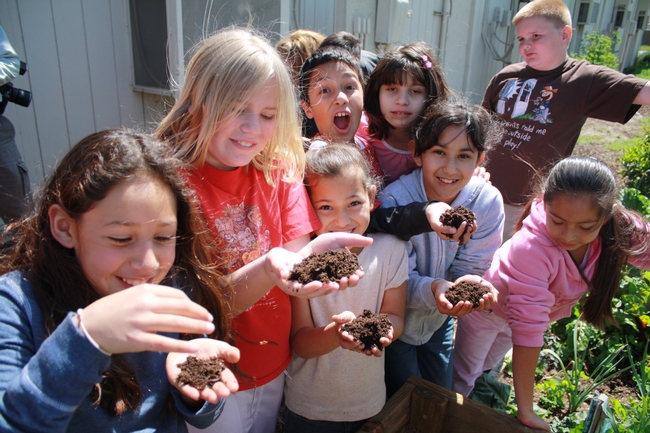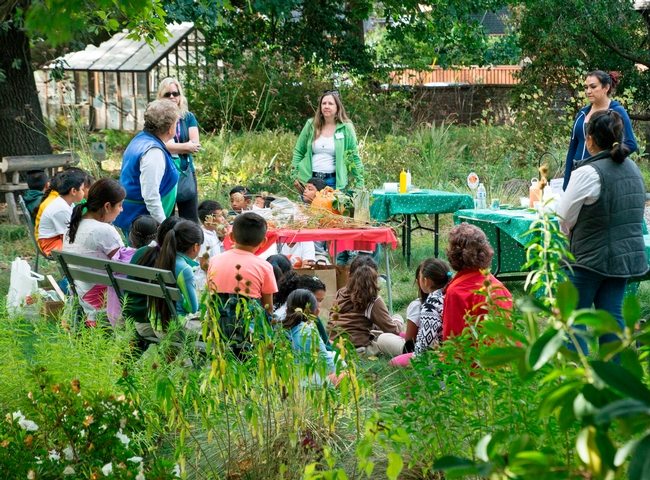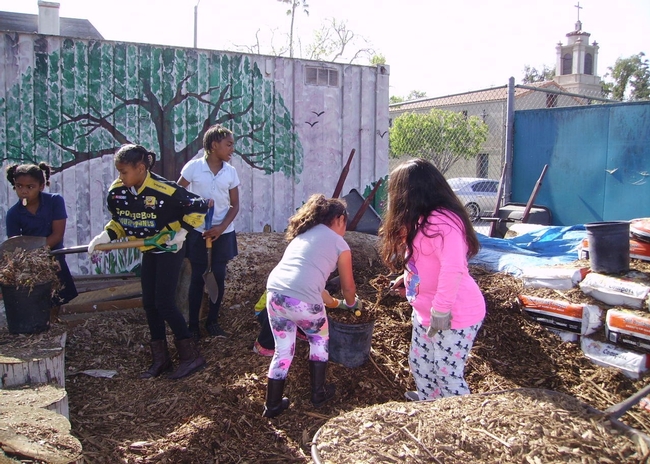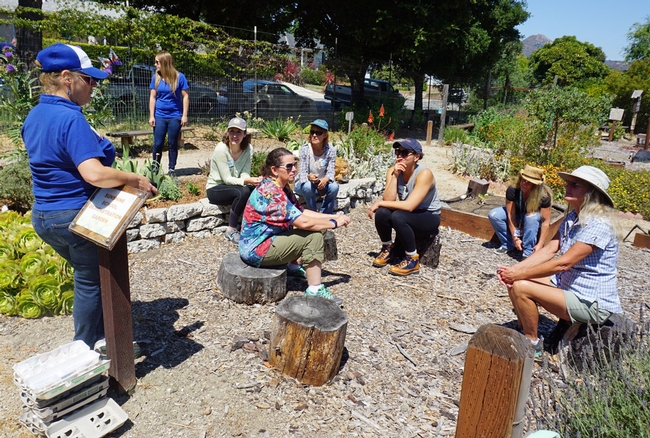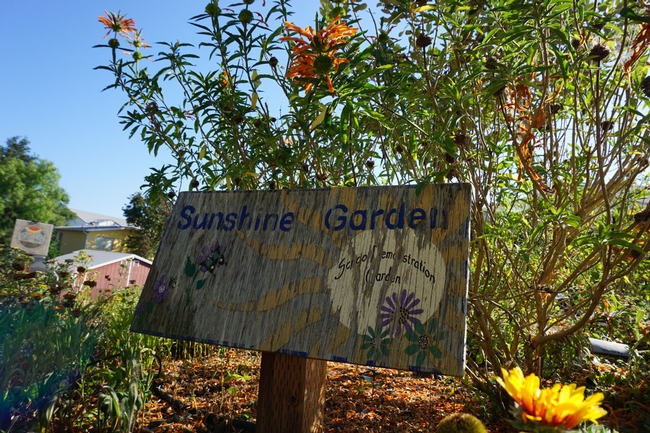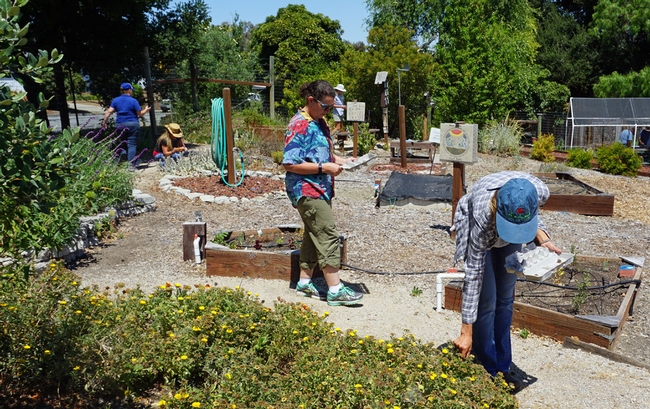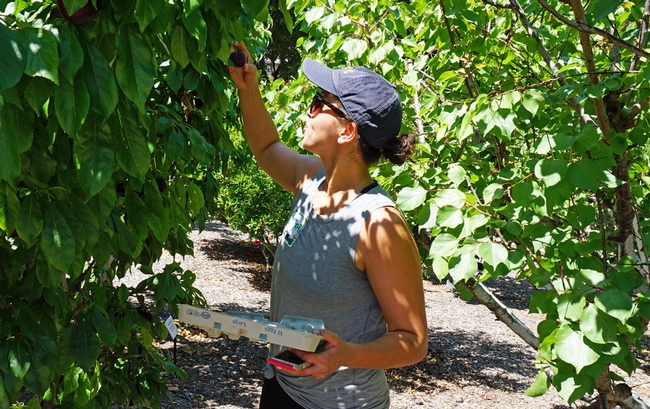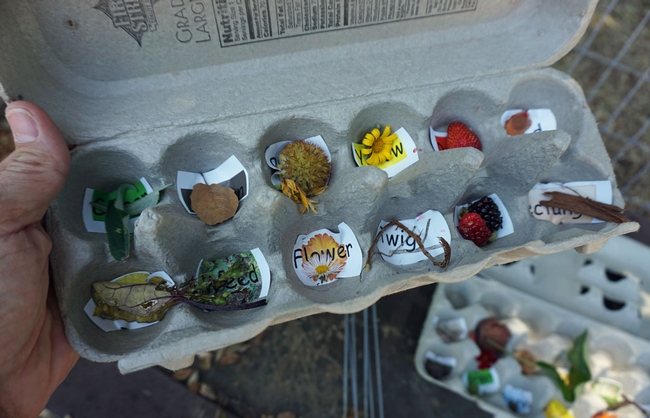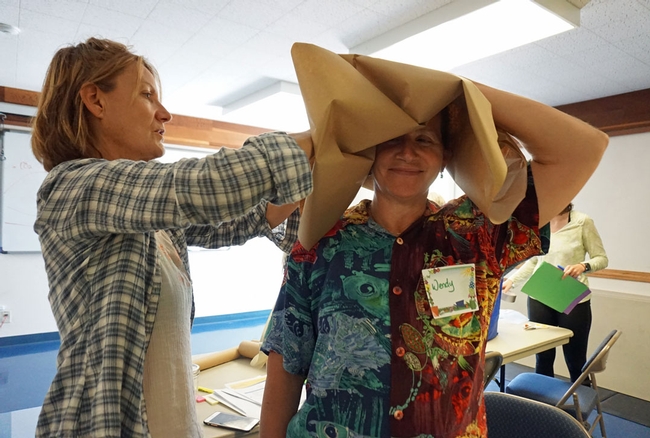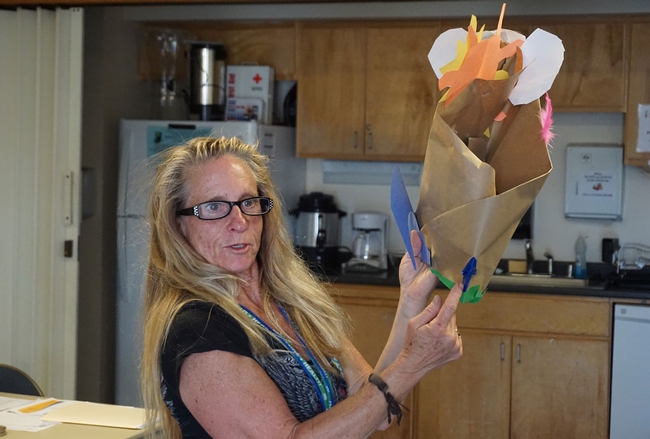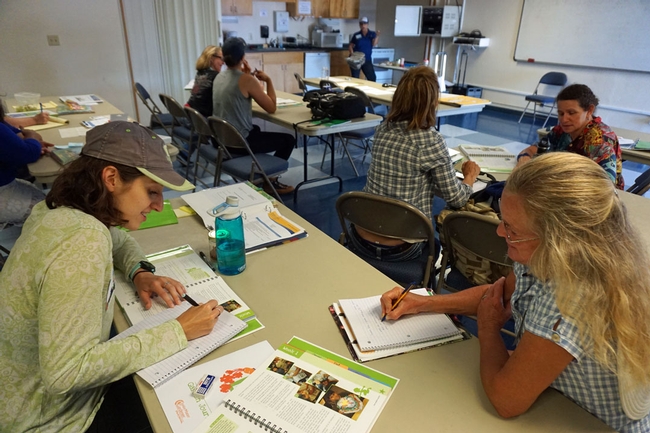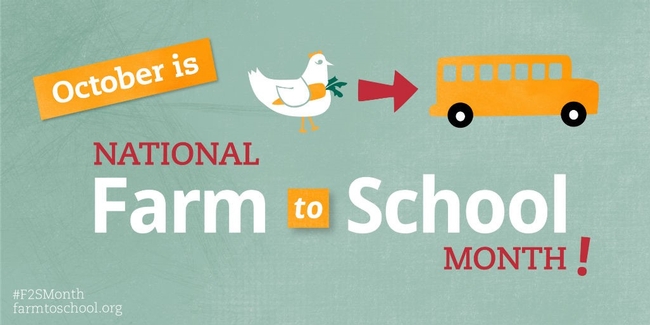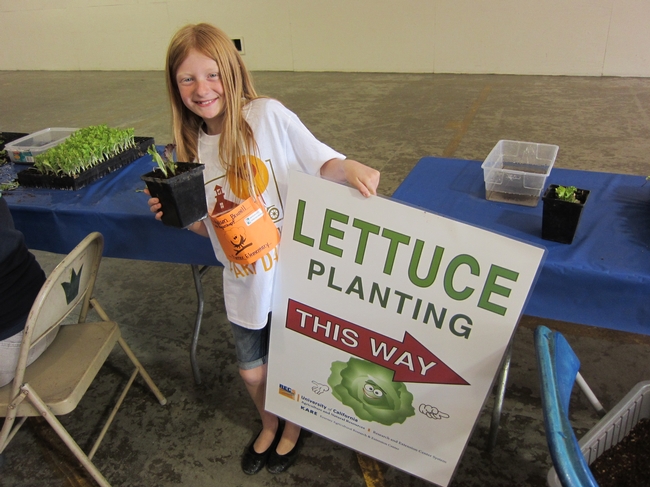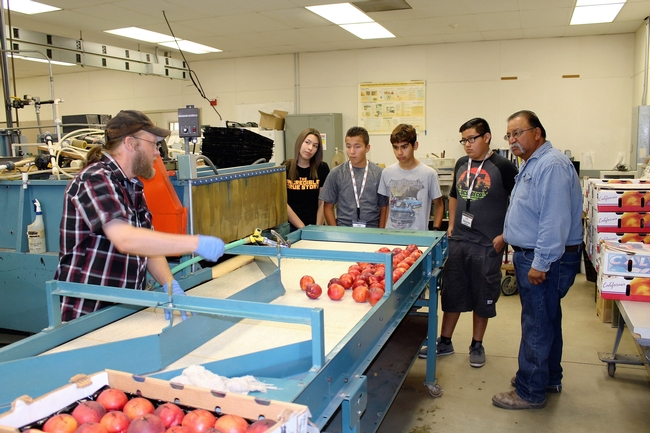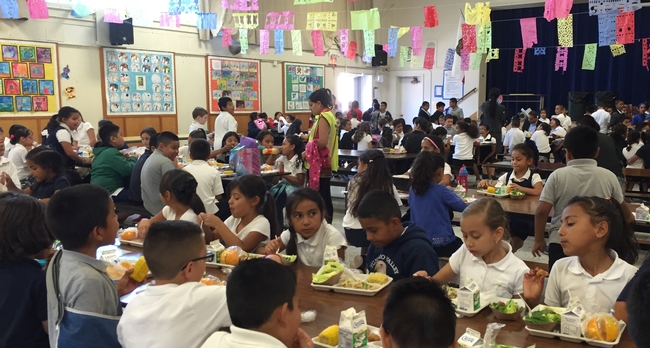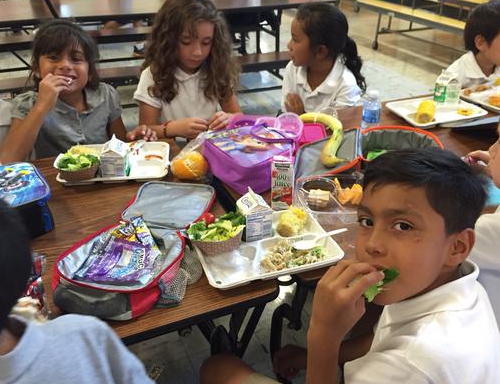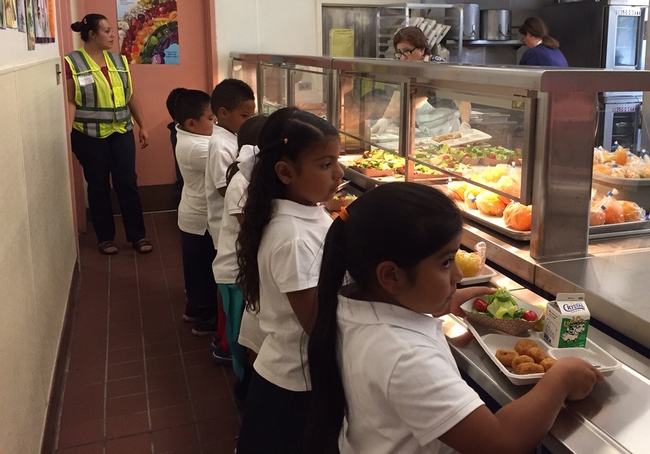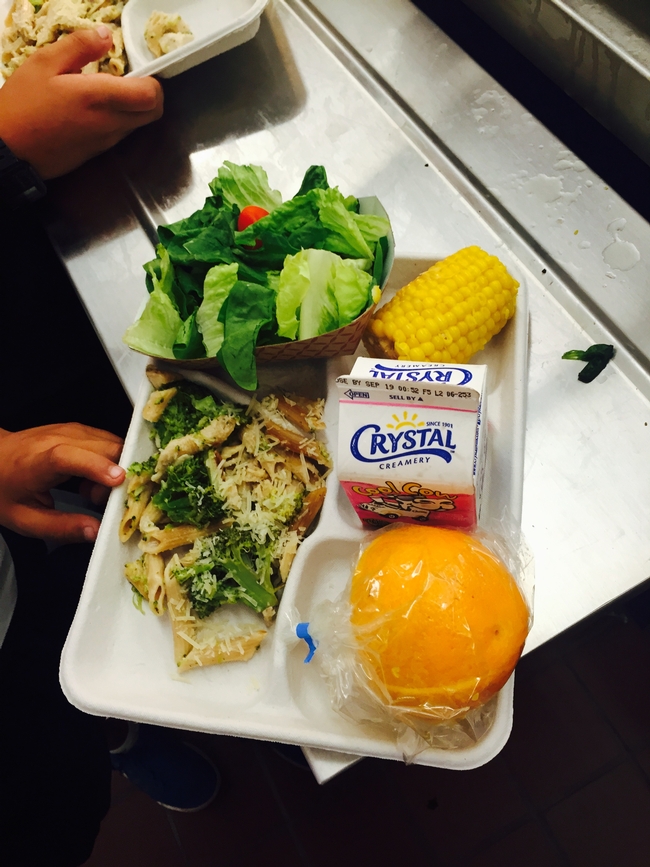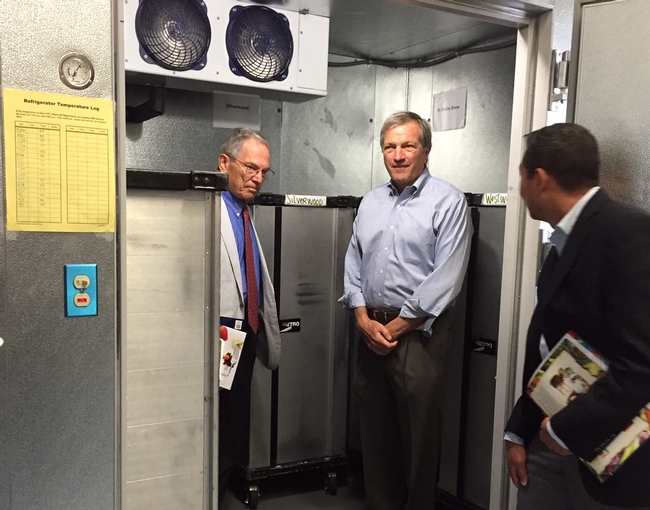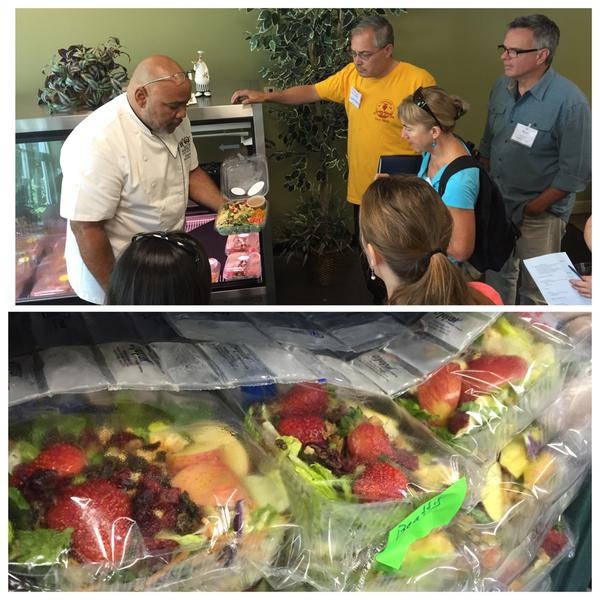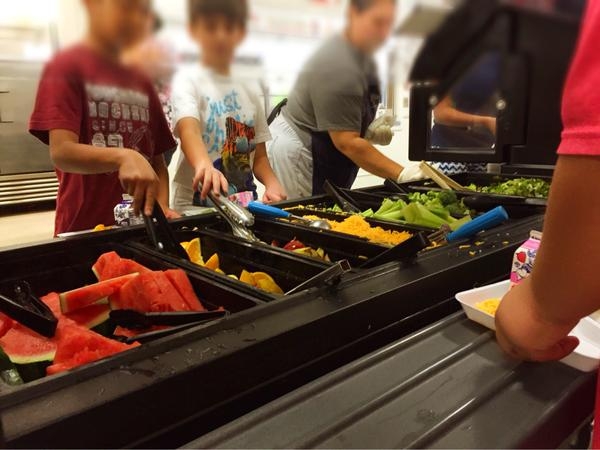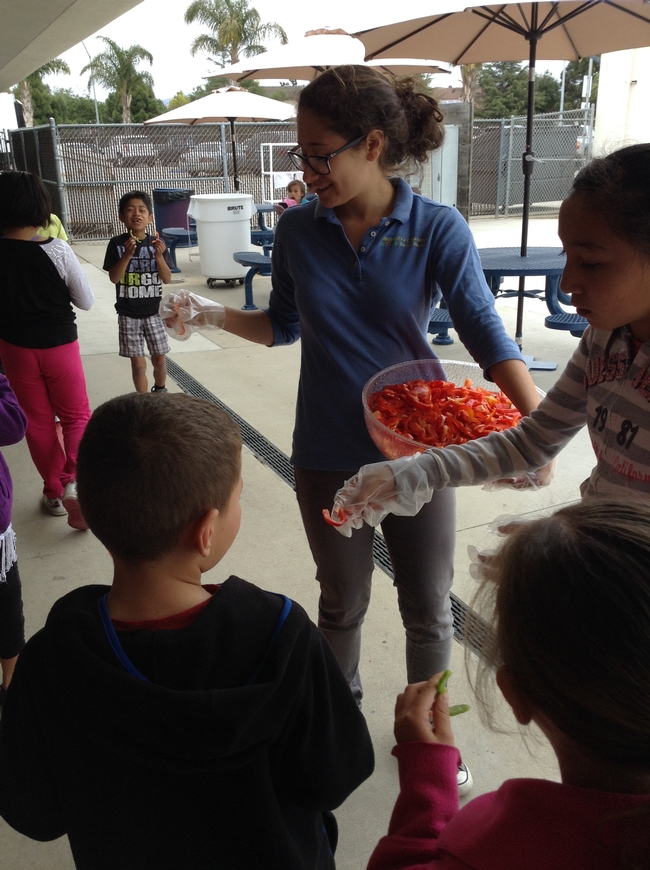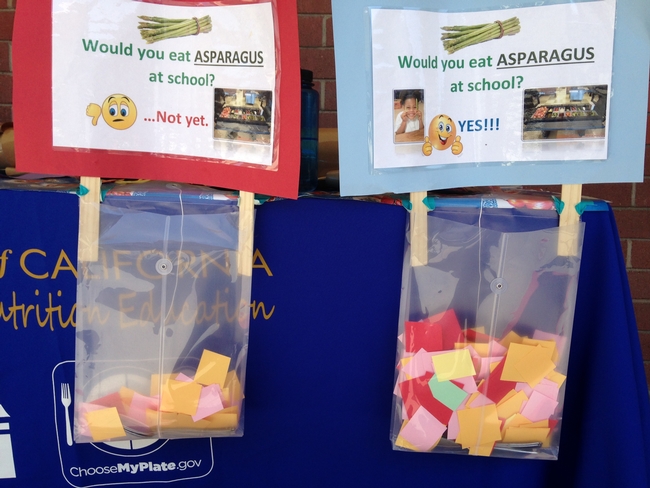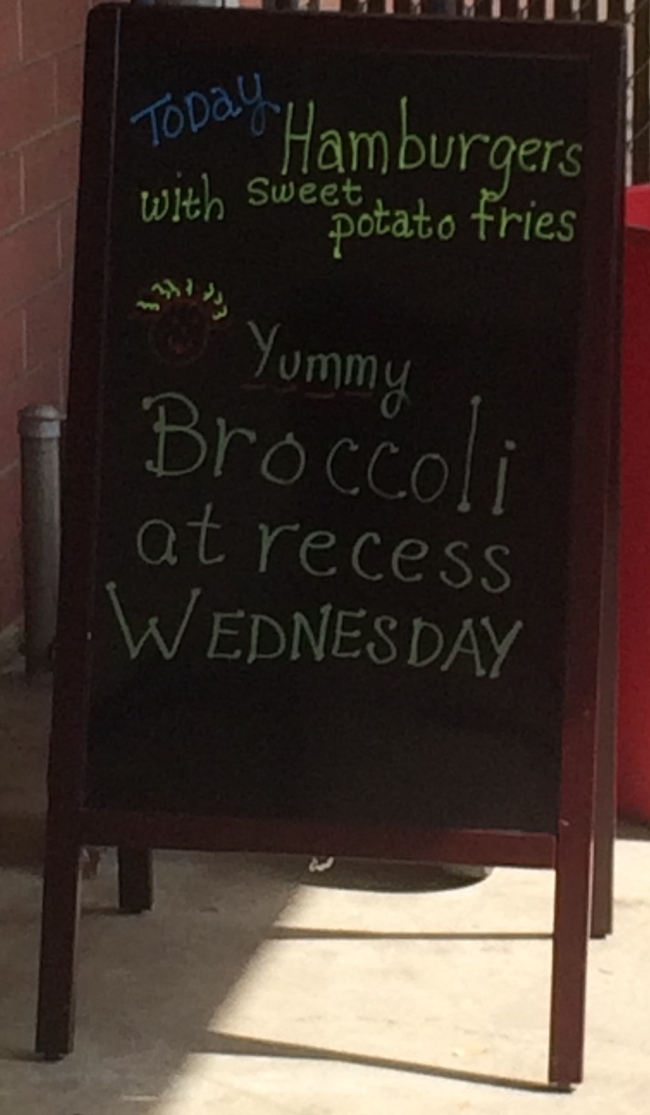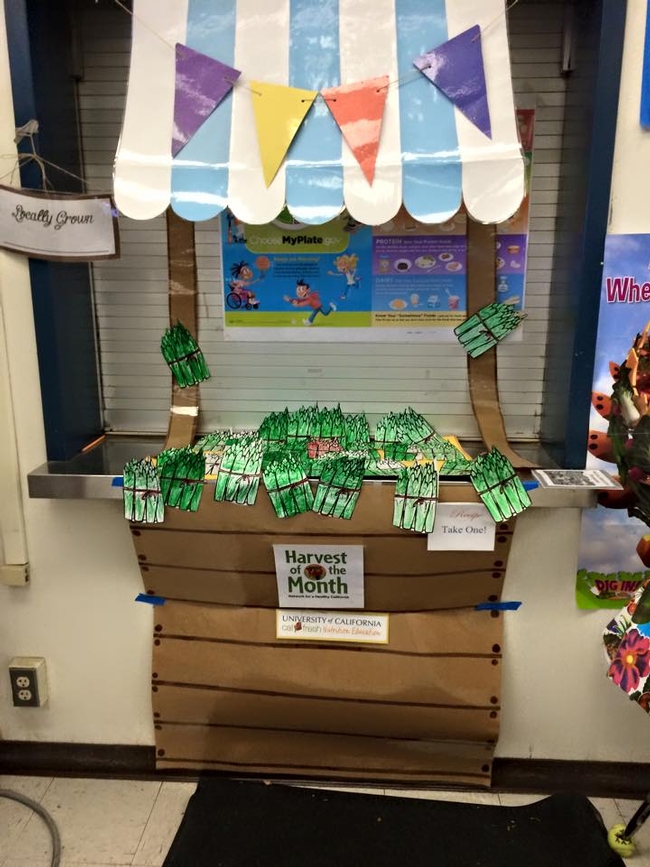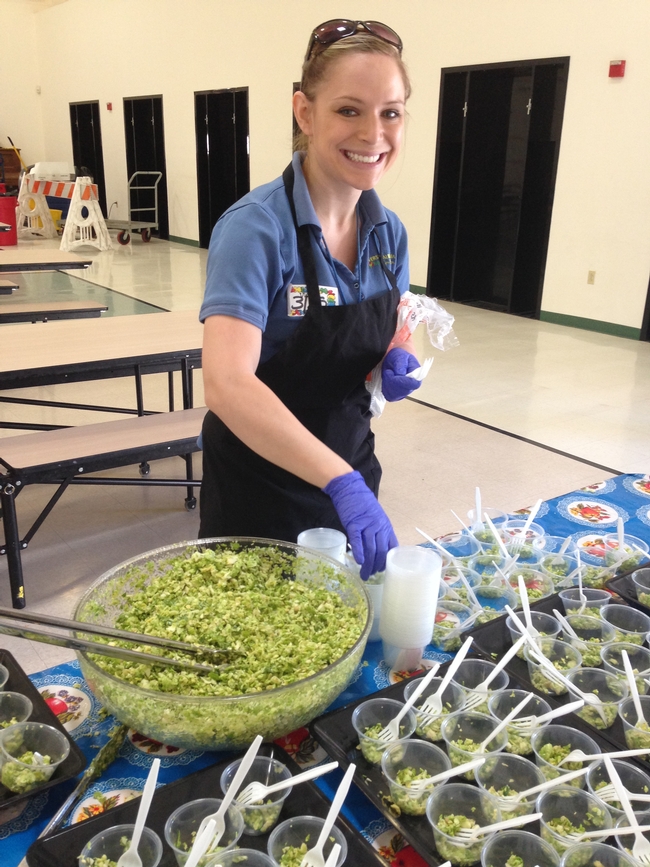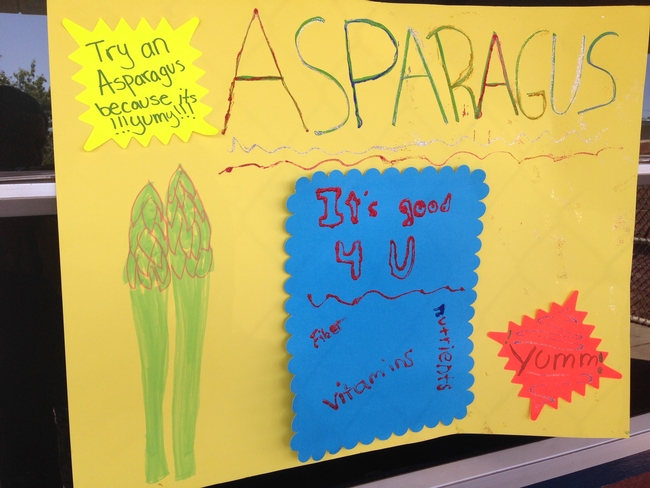Posts Tagged: school
Go back-to-school with a garden
It's that time already when the kids start heading back to school and meals go back to a strict schedule. It can be easy to turn to take-out and other convenience foods to make meal times more manageable, especially during the rush of back-to-school. However, there's a long school year ahead and focusing on good habits now can set the tone for the next nine months. The old adage that “food is fuel” rings true - healthy choices help kids maintain a healthy weight, avoid health problems, manage energy levels, and sharpen their minds.
How can we reinforce healthy eating habits during the hustle and bustle of back-to-school?
School gardening offers children opportunities to get outdoors and exercise while teaching them a useful skill. Gardens containing fruits and vegetables can revise attitudes about particular foods; there is even a correlation between growing fruits and vegetables and consumption of these products. Gardens are likely to transform food attitudes and habits and in school gardens this can be especially impactful when combined with nutrition education.
In addition to health and nutrition benefits, gardening also offers hands-on experiences in a variety of core curriculum which includes natural and social sciences, language arts, nutrition and math. This can play a big part in supporting your kids' education outside of the classroom.
Benefits of school gardening:
- Physical health
- Social and emotional health
- Academic achievement
- School and community benefits
- Enhance nutritional preferences, and
- Increased self-esteem
Learn more with the UC Master Gardener Program
The UC Master Gardener Program is a community of volunteers across California, under the UC Division of Agriculture and Natural Resources, that extends research-based information on gardening to the public. If your school does not have a school garden program, contact the UC Master Gardener Program in your county to learn about the possibility of new school garden programming and other garden-education you and your children can participate in.
The UC Master Gardener Program can connect you with local community gardens, and or provide the information you need to get started with your own school or home garden. Many programs have relationships with local schools to support garden-based education.
“Dig it, Grow it, Eat it”
The UC Master Gardener Program in Marin County hosts a portable field trip for school-age youth called “Dig it, Grow it, Eat it.” This award-winning program emphasizes engagement and the many learning opportunities that take place in nature. Youth learn all about growing edible plants from seed to harvest and educators get the support of University-trained UC Master Gardener volunteers to deliver the curriculum.
Whether or not you already have a school garden program your family can engage in, reach out to the UC Master Gardener Program to get the help and information you need to inspire healthy eating and an active lifestyle in your children. Now is a great time to plan and plant your winter garden, just in time to get your kids back to school and excited to be learning … wherever that learning takes place!
The UC Master Gardener volunteers are eager to help with all of your gardening needs. The UC Master Gardener Program can work with teachers and community volunteers to provide gardening information and consultation in the support of school gardens. With local programs based in more than 50 counties across California, there is sure to be a workshop or class near you. Visit our website to find your local UC Master Gardener Program, mg.ucanr.edu.
School gardens get new life from UC Cooperative Extension volunteers
When children grow their own fresh fruits and vegetables, they are much more likely to eat healthy food, so for decades California politicians, teachers and nutrition educators have advocated for a garden in every school. However, UC Cooperative Extension experts in Santa Barbara and San Luis Obispo counties found that garden care can dwindle over time.
“Students and their parents ‘age out' of their elementary schools,” said Shannon Klisch, UC CalFresh community education supervisor in San Luis Obispo and Santa Barbara counties. “The turnover in expertise and level of commitment can vary widely, leaving some schools with either weedy, abandoned vegetable patches, or no garden support at all.”
UCCE offers UC CalFresh, federally funded nutrition education for CalFresh recipients (formerly called Food Stamps). UC CalFresh nutrition educators in Santa Barbara and San Luis Obispo counties saw a need to mobilize highly trained community members who could develop, support, sustain and teach from school gardens. UC CalFresh joined with UC's 4-H Youth Development, Master Food Preserver, and Master Gardener programs to launch a pilot project called “UC Garden Nutrition Extenders.”
“We don't have enough staff to work the gardens in every school, so we've started recruiting and training volunteers,” said Lisa Paniagua, school garden sustainability coordinator for the UC Garden Nutrition Extender program in San Luis Obispo and Santa Barbara counties.
“By enlisting passionate volunteers, nutrition educators could significantly multiply the number of students who had access to school gardens, nutrition education, and training in science, technology, engineering, and math (STEM) in the garden,” said Katherine Soule, Ph.D., youth, families, and communities advisor in San Luis Obispo and Santa Barbara counties.
Klisch said UC Garden Nutrition Extenders are local members of their school communities.
“They are often parents, neighbors or staff and they have a personal investment in seeing the youth and the school environment flourish, which makes for a much more sustainable intervention and increases community capacity to sustain a garden program," she said.
Paniagua, Klisch, and Soule created a hybrid training program integrating volunteers and educators from UC CalFresh, UC Master Food Preservers, UC Master Gardeners and 4-H. They selected a 4-H gardening and nutrition curriculum written by researchers at Texas A&M AgriLife Extension, which includes engaging, student-centered, experiential learning while dividing time between the garden and the classroom. The curriculum reinforces goals in Common Core and Next Generation Science Standards, policies that guide public school teaching.
“Teachers will want to know we are familiar with curriculum standards. Applying them adds value to these classes,” Paniagua said.
In July, the third cohort of future UC Garden Nutrition Extender volunteers gathered at UC Cooperative Extension in San Luis Obispo to learn how they can help schools transform their gardens into fruitful learning activity centers for the students.
One member of the new cohort is Jill Marie, a certified Master Gardener in San Luis Obispo County.
“I live by a school and they have garden beds that are not kept up. I want to get involved and get to know the kids,” she said.
The volunteer teachers learn by conducting the indoor and outdoor curriculum activities and food demonstrations over a four-week period. Their first foray into the UCCE Sunshine School Demonstration Garden began with a mindfulness practice.
“Close your eyes, and just listen,” Paniagua instructed. A moment later she asked, “What did you hear?”
To encourage students to take a closer look at the garden, the class was sent out with egg cartons labeled for a 12-item scavenger hunt, and later asked to select one item to discuss. Reporting on topics are part of Common Core standards for students in third- through fifth-grades and creates discussion learning topics around science, math, engineering, art, and even poetry.
Back in the classroom, the trainees began work in pairs on the next lesson, “Know & Show Sombrero.” With paper, tape and a bag of craft supplies – balloons, ribbons, foam stickers and construction paper – the extenders made hats that represent everything a plant needs. One group used a yellow balloon to symbolize the sun, another had water drops raining down from the brim. A third group sprinkled glitter to represent the nutrients in the soil.
“Why are we putting these on a hat?” Paniaqua asked the class. “The exercise is useful for kinesthetic learners. It reinforces what they learn. At the end, we talk about it and develop conversation skills.”
The half-day session ended with a tasting of purple, yellow and orange carrots.
“In your journals, write words to describe the smell, sight, taste and feel of the three colors of carrots,” Paniagua said.
One of the volunteers Christina Lawson, director of nutrition for Coast Unified School District, laughed.
“We tried to serve purple carrots. Pfft. Zip,” she said. “I'm excited about this. If the kids try them before coming to the cafeteria, it would make my life so much easier.”
This project is funded through local grant awards from the National 4-H Council in collaboration with Lockheed Martin, and UC CalFresh Nutrition Education Program, which is a joint agreement among the U.S. Department of Agriculture/Food and Nutrition Service (USDA/FNS), the California Department of Social Services (CDSS) CalFresh branch, and the University of California Cooperative Extension (UCCE).
October is National Farm-to-School Month
Schools across the country are celebrating local connections to local food producers in October during National Farm to School Month. Education and outreach activities such as school gardens, cooking lessons and field trips are teaching students about healthy, local foods and food's journey from the farm to their forks.
There are plenty of opportunities for teachers and schools to celebrate and get involved in National Farm to School Month with the University of California Division of Agriculture and Natural Resources (UC ANR). Here are a few ideas to get you started.
4-H youth development
Launch a 4-H Club at your school. The 4-H Youth Development Program emphasizes enrichment education through inquiry-based learning. Core content areas include Healthy Living as well as Science, Technology, Engineering and Math (STEM). Clubs have access to a wealth of curricula materials exploring food, agriculture and natural resources. 4-H also offers the Ag in the Classroom school enrichment program.
Boots on the ground
Invite UC ANR academics and program staff to your career day or science fair or to make a classroom presentation. Specialists from Master Gardeners, Nutrition Education, Project Learning Tree, California Naturalist and other UC ANR programs know how to engage and inspire your students.
Some programs, including Project Learning Tree, offer "train the trainer" professional development workshops that equip educators with the skills and knowledge to teach concepts in their own classrooms. Project Learning Tree also provides free activity guides to teachers who attend their workshops. The guides highlight differentiated instruction, reading connections, and assessment strategies and offer ideas to integrate technology into classroom instruction,
Research and Extension Centers
Take your students on a field trip to a UC ANR Research and Extension Center (REC). The nine RECs in California are focal points for community participation and for active involvement in current and relevant regional agricultural and natural resource challenges.
Visiting a REC offers students a unique opportunity to learn about food production through the lens of applied science research in plant pathology, integrated pest management, conservation tillage, water conservation, development of new crop varieties, and much more. Some RECs also host extended education programs such as Sustainable You! Summer Camp and FARM SMART.
The 2016 National Farm to School Month theme is One Small Step, which highlights the easy ways anyone can get informed, get involved and take action to advance farm to school in their own communities and across the country.
Each week will have a different focus:
- Education (October 3-7)
- Healthy School Meals (October 10-14)
- Farmers & Producers (October 17-21)
- The Next Generation (October 24-28)
Join the celebrations by signing the One Small Step pledge then take your own small step to support healthy kids, thriving farms and vibrant communities this October by partnering with UC ANR.
This story en español.
Farm to fingers: Schools provide fresh fruits and vegetables for children’s meals
Several grade school students set down their forks to eat their green salad, picking up individual lettuce leaves with their fingers and pushing them into their mouths. Not that I was there to judge for style, it was just an observation as I looked around the cafeteria festooned in colorful hand-cut paper banners to see how many of the kids had taken a salad.
The youngsters are required to take at least a half-cup serving of fresh fruits or vegetables as part of a healthful meal to meet national nutrition standards, but I noticed they were voluntarily eating the fresh leafy greens and orange slices.
The children had selected the food themselves from a new serving line, which was made possible by a grant from the USDA aimed at encouraging children to eat healthier school lunches. U.S. Department of Agriculture has been providing a new round of grants since 2013 to upgrade kitchen and cafeteria equipment. Ygnacio Valley Elementary School is in Mount Diablo Unified School District, which received a USDA grant.
About one-third of children in California are overweight or obese, which is associated with serious health risks.
According to The Pew Charitable Trusts, 93 percent of school districts in California, and 88 percent nationwide, need at least one piece of equipment to better serve students nutritious foods.
Kenneth Hecht, director of policy for the Nutrition Policy Institute organized the Sept. 3 visit to the Mount Diablo Unified School District for Congressman Mark DeSaulnier and USDA executives to see the improvements.
The school district serves about 20,000 meals each day, nearly half of which (46.2 percent) are free or reduced price for children from low-income families. By replacing a refrigerator bought in 1973 with a new walk-in refrigerator, the central kitchen is able to store and serve twice as much fresh produce while saving energy and energy costs, said Anna Fisher, director of Food and Nutrition Services for Mount Diablo Unified.
The new serving line allows for food to be displayed so the children can select their own food, whereas before, each tray was filled by a server and handed to the students.
“We've seen that when the children select their own food, less food gets thrown away,” said Fisher.
“The examples we are seeing at Mount Diablo Unified School District are perfect illustrations of what these USDA grants can do, from the procurement of food to serving healthy meals to children,” said Hecht.
Congressman DeSaulnier, who ate lunch with the students, is sponsoring the School Food Modernization Act (HR 3316) to continue and strengthen the USDA grants program.
Another piece of federal legislation aimed at improving child nutrition is the Healthy, Hunger-Free Kids Act of 2010, which includes farm to school support and expires on Sept. 30, 2015.
“This fall is a pivotal time for the future of Farm to School programs across the country,” said Gail Feenstra, deputy director of the UC Sustainable Agriculture Research and Education Program (SAREP) in the UC Division of Agriculture and Natural Resources.
On Sept. 2, SAREP and the Urban Environmental Policy Institute at Occidental College hosted a tour of farm-to-school sites in the Riverside Unified School District where Los Angeles-area participants were able to meet with farmers, school chefs, food service directors, advocates, researchers and elementary students and to witness firsthand the benefits and challenges of providing farm-fresh fruits and vegetables to Southern California schoolchildren.
Riverside schools have transitioned from heating prepackaged meals to buying local produce and preparing fresh food on-site.
According to Kirsten Roloson, director of Nutrition Services, and Adleit Asi, operations manager, Riverside Unified now buys $400,000 worth of produce from local farmers. One farmer, Bob Knight, who supplies oranges and other produce to Riverside Unified, said he's making five to seven times more money selling to schools than he did before.
“Farm-to-school programs increase access to fresh, healthy produce among school children while also supporting local farms,” said Feenstra. In California, she noted that 2,626 schools participate in farm-to-school programs, serving 1.8 million students and buying more than $51 million in produce from local California farmers.
Feenstra will be leading a similar farm-to-school tour for policymakers in Sacramento on Sept. 29.
"With new equipment and fresh produce, schools can prepare healthy and more appealing school meals that may be the most nutritious meal a child receives that day," Hecht said.
Whether children eat with forks or fingers, the nutritional quality of the food they eat can affect their lives, long term.
The University of California Global Food Initiative aims to put the world on a path to sustainably and nutritiously feed itself. By building on existing efforts and creating new collaborations among UC's 10 campuses, affiliated national laboratories and the Division of Agriculture and Natural Resources, the initiative will develop and export solutions for food security, health and sustainability throughout California, the United States and the world.
Encouraging students to eat their vegetables
Which end of an asparagus do you eat? I am not going to eat that, it's too spicy! Pink milk cartons (non-fat) are only for girls.
These and many other questions and comments came from students and staff at schools in the Santa Maria-Bonita School District (SMBSD) during recent efforts to expose students to a wider variety of fruits and vegetables. A collaboration between SMBSD staff and UC Agriculture and Natural Resources's UC CalFresh Nutrition Education Program of San Luis Obispo and Santa Barbara Counties (UC CalFresh) was initiated in the 2014/2015 school year to work on increasing the likelihood that students will select and consume vegetables offered through the school meal program.
The collaboration included three components: monthly, school-wide seasonal produce tastings facilitated by UC CalFresh and supported by the school district; Smarter Lunchroom Movement strategies implemented by district food service staff with support from UC CalFresh; and classroom nutrition education with curricula provided by UC CalFresh and implemented by participating classroom teachers.
The monthly produce tastings were a coordinated effort between the UC CalFresh Nutrition Educators, student leaders from the Student Nutrition Advisory Council, and Cafeteria staff. The first goal was to familiarize the students in the five elementary schools with local, seasonal vegetables – and eventually get them on the school menu and on students' plates. During the months of March, April and May of 2015 more than 4,000 students at five participating schools
got the opportunity to try new vegetables like Brussels sprouts, asparagus and sweet bell pepper. After tasting new vegetables, students then placed a ticket in either a “yes” or “no” box to indicate whether they would like to see those vegetables again on their school menu.Student leaders participated in all aspects of the monthly tastings, from advising on what produce items to sample, to making signs advertising the featured produce, to handing out the samples to their peers. The voting results were overwhelmingly positive with a majority of students in favor of putting Brussels sprouts, asparagus and yellow bell peppers on the school menu. As a result of these findings, and the students' enthusiasm for trying new things, food service staff are working on incorporating a Brussels sprouts salad into their regular menu.
The second component included Smarter Lunchroom Movement (SLM) strategies from the Cornell Center for Behavioral Economics. These strategies were introduced at a cafeteria manager training facilitated by UC CalFresh. At the training, district staff were introduced to SLM concepts and encouraged to identify two changes they wanted to implement in their
school cafeterias before the end of the year. Changes identified included improving signage on the salad bar and in the entryway, creating a cafeteria brand (i.e. Bulldog Café) to encourage students to take pride in their lunchroom, and creating a more welcoming atmosphere so students could sit and enjoy their school meal. In addition, UC CalFresh staff made a regular habit of eating lunch in the school cafeteria with students when they were on campus for other nutrition education events.Students, at first surprised seeing adults eating school meals, welcomed the nutrition educators to their tables. Staff took the opportunity to talk to the students about their food, model healthy food habits and dispel myths about their food. Myths included things like pink milk cartons (non-fat) were only for girls and school lunches are unhealthy. By the end of the school year, all participating schools had improved their scores on the Smarter Lunchroom Self-Assessment Scorecard and plans are currently being developed to provide districtwide cafeteria branding.
The third component was the in-class curricula. Classroom curricula has been the primary focus of the UC CalFresh program for many years. UC CalFresh provides “No-Prep Nutrition Education Kits” and in class food demonstrations to enrolled teachers (Educator Extenders). These Educator Extenders teach evidence-based nutrition education lessons based on the 2010 Dietary Guidelines for Americans. This year, as the collaboration with the school cafeteria developed, UC CalFresh staff rolled out the concept of Harvest of the Month mini kits and farm stands to coincide with the produce item being featured in the monthly cafeteria tastings. Educator Extenders had the
option of connecting classroom curricula with cafeteria efforts through the Harvest of the Month mini-lesson, then posting their students' work on the farm stand bulletin boards in their school cafeteria. The lessons and the student artwork helped to bring the three components together for students in all age groups.This collaborative effort has brought about many opportunities to educate, expose and inform students and staff about local produce and how delicious it can be in their school lunches. Students who once thought that sweet yellow, green and red bell peppers were too spicy had the opportunity to sample them and see for themselves. Students who did not know which end to eat an asparagus from got to sample it and then vote on whether or not they wanted to try it again. Food service staff also got to see how excited their students were to sample new items, including Brussels sprouts, and have a voice in their school menu.
For more pictures, visit the UC CalFresh Facebook page.
An initiative to maintain and enhance healthy families and communities is part of the UC Division of Agriculture and Natural Resources Strategic Vision 2025.


